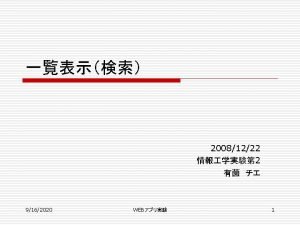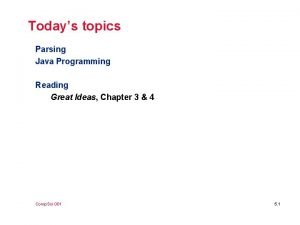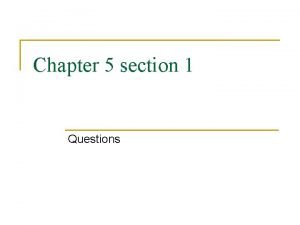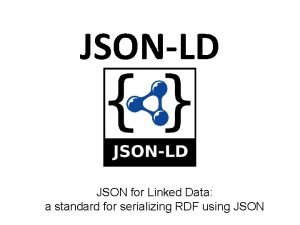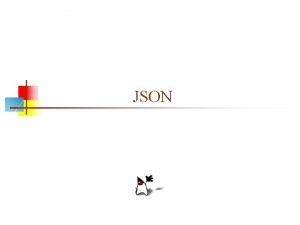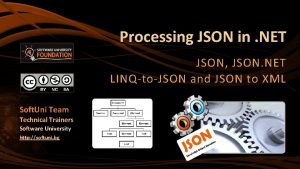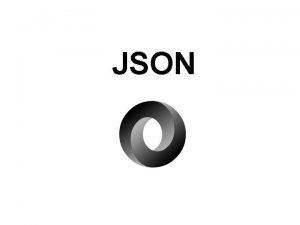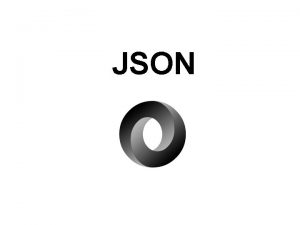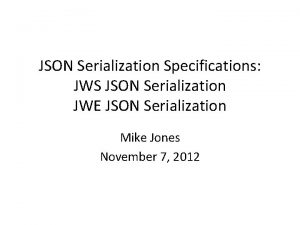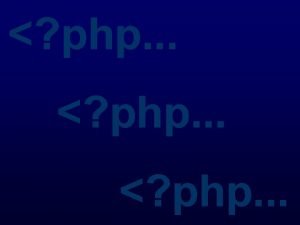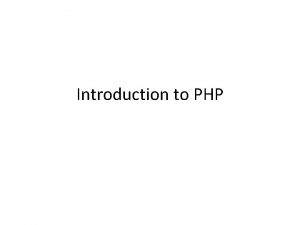PHP and JSON Topics Review JSON Reading a














- Slides: 14

PHP and JSON Topics • Review • JSON

Reading a file in PHP file_get_contents() : Using this function will return the contents of a given file as a single string. file() : Reads an entire file into an array. Each cell contains a string of text (paragraph). Writing to a file in PHP file_put_contents() : Using this function will write the contents of a string to a given file. <? php $file = ‘players. txt'; $current = file_get_contents($file); $current. = “Bobon"; file_put_contents($file, $current); ? >

PHP: array() • array() : used to create an array Example: <? php $my_array = array("Dog", "Cat", "Horse"); ? >

PHP: list() • list(): used to assign a list of variables in one operation. Example: <? php $my_array = array("Dog", "Cat", "Horse"); list($a, $b, $c) = $my_array; echo "I have several animals, a $a, a $b and a $c. "; ? > Output: I have several animals, a Dog, a Cat and a Horse.

PHP: preg_split() • preg_split() is used to split strings into a meaningful regular expression. • A regular expression is a sequence of characters that can be defined by a pattern. • Requires two parameters: the pattern and the input string.

PHP preg_split() Example : Split a four word sentence by commas or space characters: " ", r, t, and n <? php $mywords = preg_split("/[s]/", "Bobo likes cold fries"); ? > The above example will create the following array: Array ( [0] => Bobo [1] => likes [2] => cold [3] => fries ) Explanation : / = start or end of pattern string [. . . ] = grouping of characters s = Any whitespace character (space, tab).

JSON

JSON • JSON is a simple way to represent Java. Script object as strings. • JSON stands for Java. Script Object Notation. • • A web application and a server communicate easily using the JSON data format.

JSON – How data is stored. • Each object in JSON is represented as a list of property names, called Keynames and their values, in the following format: ( “keyname 1” => “value 1”, “keyname 2” => “value 2” ) NOTE: => is an association symbol

JSON Data Structure Requirements JSON relies on two data structures: Strings and Arrays • Strings are used to store both the Keyname and the value. Example: Keyname value “First. Name” => “Carol” • An array is used to store the list of Keyname/ Value pairs. Example: $json = array ( “First. Name" => ”Carol”, “Last. Name" => “Baca”, “Id. Number" => “ 986345” );

How is JSON used? • When a web application interacts with a web service it can obtain secure data using a PHP script. • A PHP script can return this data to Java. Script using a JSON object. • JSON strings are converted into Java. Script objects with Java. Script’s JSON. parse function.

What is XMLHttp. Request • XMLHTTPRequest is an API that provides Java. Script client functionality. • XMLHTTPRequest is used to transfer data between a client and a server. • XMLHTTPRequest enables a web page to update just a part of the page without disrupting what the user is doing.

Example XMLHTTPRequest in Java. Script Step 1: Create an XMLHttp. Request var my. XMLRequest = new XMLHttp. Request(); Step 2: Register an onload event to assign a handler for when the event is triggered. This event looks at the request's ready. State to see if the transaction is complete my. XMLRequest. onload = create. Possible. Answers; Step 3: Open the request and send it to the server. my. XMLRequest. open("GET", “my. Program. php", true); my. XMLRequest. send(); NOTES: Parameters of the open() method: 1. 2. 3. Type of request: GET or POST The url and data: an address to a file on a server: method: Async: true (asynchronous) or false (synchronous) By sending asynchronously, the Java. Script does not have to wait for the server response, but can instead: (a) Execute other scripts while waiting for server response. (b) Deal with the response when the response is ready NOTE: We can pass a variable to the PHP file using a query string.

Practice: Create the following web page: 1. Build a text file containing terms and definitions. 2. Build the HTML page (no forms). Include a button, id for “defin”, and an id for “word”. 3. Build the Java. Script file to request a JSON object from a PHP script. 4. Build the PHP script to open a file, randomly select a word /definition pair, and return it as a JSON object to the Java. Script file. Id: “word” Id: “defin”
 Php is json
Php is json Pre reading while reading and post reading activities
Pre reading while reading and post reading activities Www.facebook.com.php
Www.facebook.com.php Php php://input
Php php://input Reading for today topics 5
Reading for today topics 5 Difference between silent reading and reading aloud
Difference between silent reading and reading aloud Type of reading
Type of reading Real definition of extensive reading
Real definition of extensive reading For adult
For adult Intensive reading definition
Intensive reading definition Section 1 guided reading and review labor market trends
Section 1 guided reading and review labor market trends Chapter 18 section 2 the inferior courts answer key
Chapter 18 section 2 the inferior courts answer key Chapter 5 section 1 guided reading and review
Chapter 5 section 1 guided reading and review Json associative array
Json associative array Json ld playground
Json ld playground



